Terminal Velocity: How Transport Architecture is Accelerating Into the Future

The latest edition of “Architizer: The World’s Best Architecture” — a stunning, hardbound book celebrating the most inspiring contemporary architecture from around the globe — is now available for pre-order. Secure your copy today.
Transportation architecture directly impacts how we experience movement, whether on a daily commute or a long journey. These buildings are not just points of departure or arrival; they are also thresholds that frame how we connect with place (whether it be the urban or natural elements or its cultural dimensions). Airports, train stations and transport hubs offer the first impression of a place. Their design can make all the difference between whether or not a journey feels smooth or stressful — or, in exceptional cases, maybe even inspiring! Personally, when I spend hours in airports or bus terminals, I enjoy walking around and observing the architecture. I like studying how spaces are organized, how natural light is used.
In recent years, many unique examples of transport architecture have emerged from Gulf countries, with futuristic terminals and monumental infrastructure. Yet, equally interesting and innovative projects can be found across Europe, the United States and Australia. These winning projects from the 13th A+Awards highlight how transport design today is not only about scale and spectacle but also about sustainability, expanding how these spaces in our society can articulate the human experience at the heart of complex transit logistics.
Milence Truck Charging
By Proof of the sum, Europe
Popular Choice Winner, Sustainable Transportation Project, 13th Architizer A+Awards
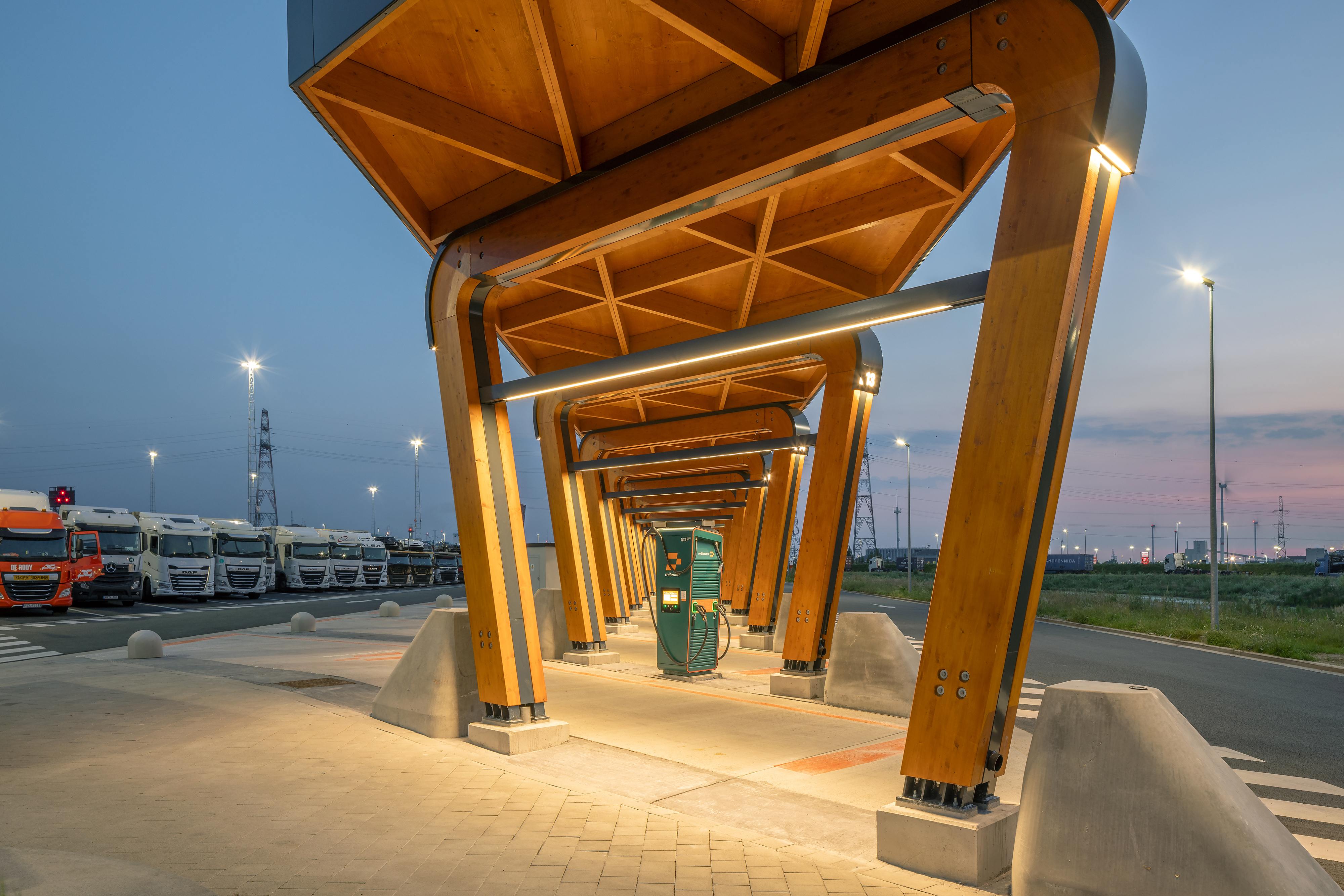
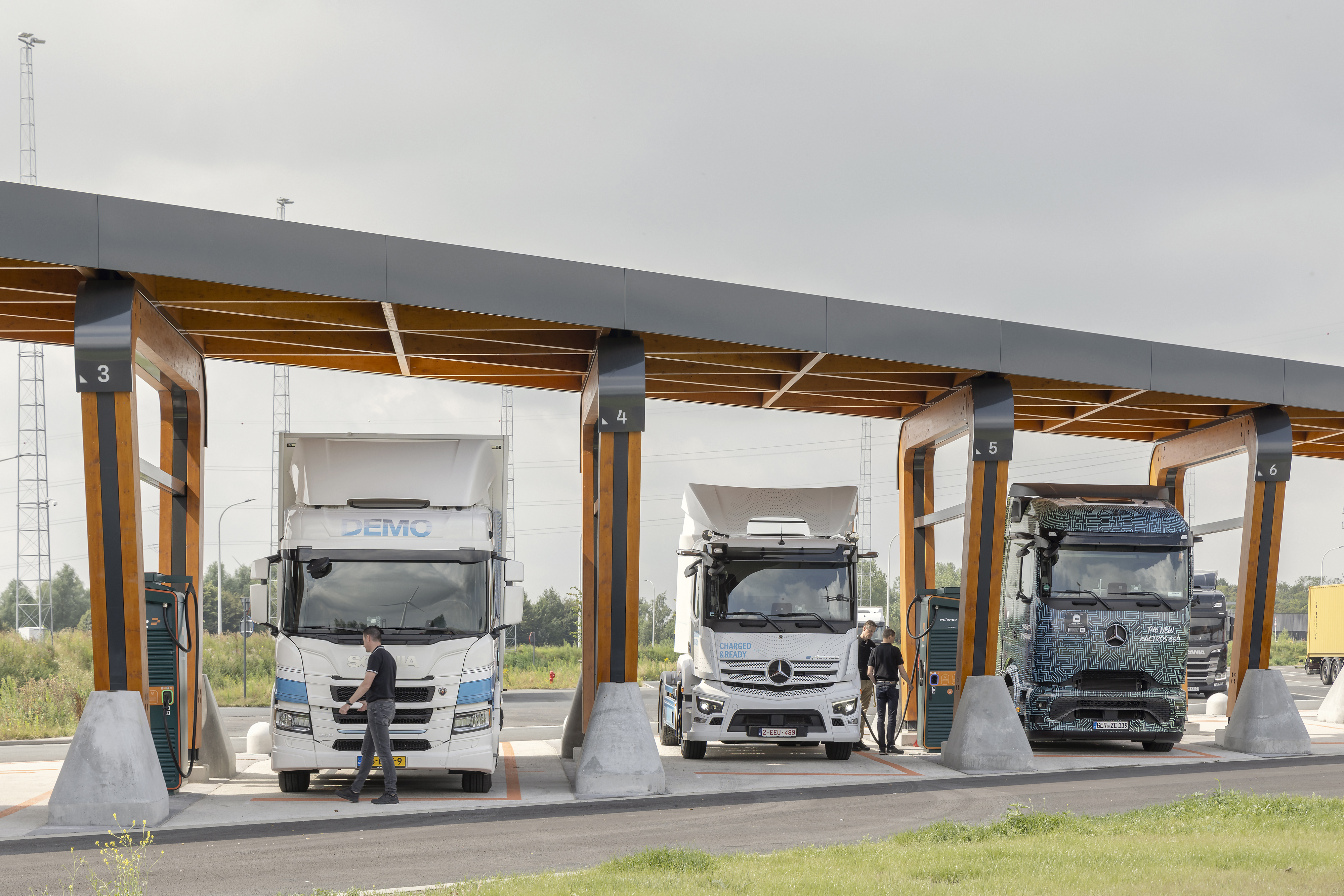 Proof of the sum designed the Milence Truck Charging network to support Europe’s shift toward electric freight transport. The sites are laid out with clear circulation for heavy vehicles, efficient charging zones and areas for rest. Architecture here balances durability and simplicity, using robust materials that can handle continuous use while still feeling welcoming. The design integrates lighting, signage and shelter to improve safety and usability during all hours of operation. By focusing on both infrastructure and human needs, the charging network sets a standard for how transport architecture can support sustainability.
Proof of the sum designed the Milence Truck Charging network to support Europe’s shift toward electric freight transport. The sites are laid out with clear circulation for heavy vehicles, efficient charging zones and areas for rest. Architecture here balances durability and simplicity, using robust materials that can handle continuous use while still feeling welcoming. The design integrates lighting, signage and shelter to improve safety and usability during all hours of operation. By focusing on both infrastructure and human needs, the charging network sets a standard for how transport architecture can support sustainability.
O’Hare International Airport Terminal 5 Expansion
By HOK with GFT, Chicago, Illinois
Jury Winner, Sustainable Transportation Project, 13th Architizer A+Awards
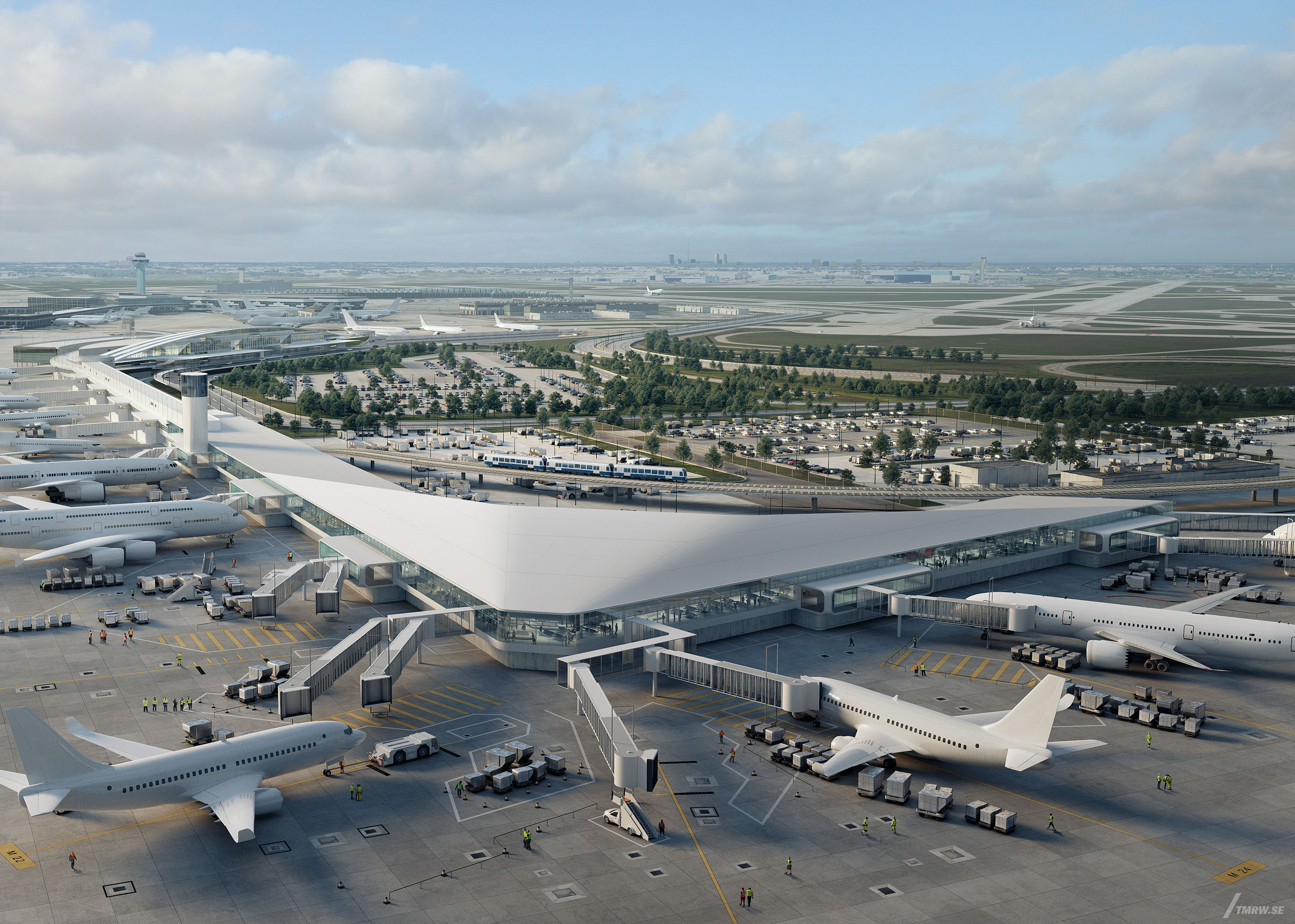
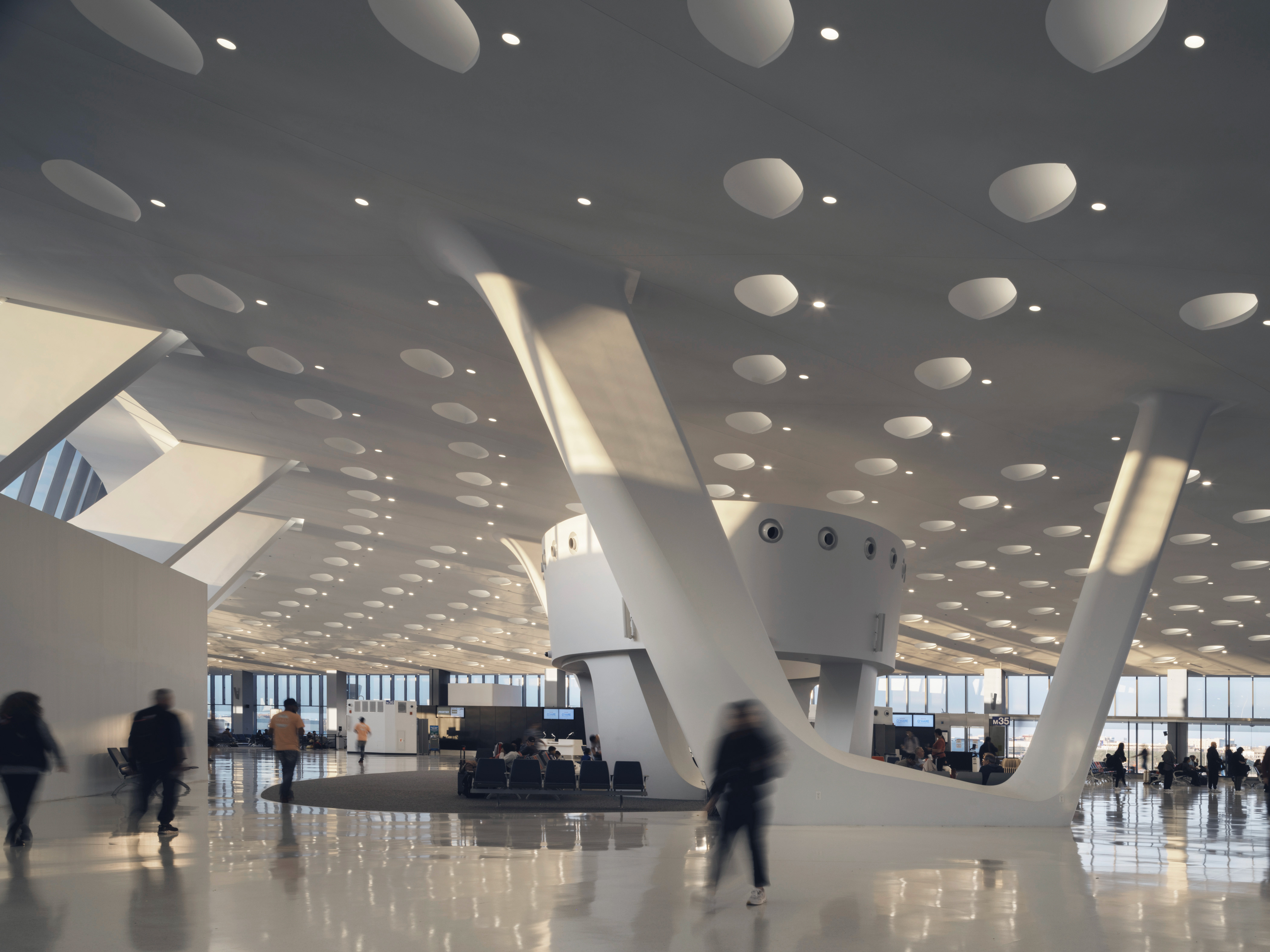 HOK’s expansion of Terminal 5 at O’Hare International Airport, instead of extending the terminal in a straight line, bends it into a boomerang shape, optimizing airfield space while adding community areas and amenities. Architecturally, the terminal is defined by its wing-shaped roof and sweeping clerestory windows, which flood the interior with daylight. This natural illumination improves wayfinding and reduces stress for travelers.
HOK’s expansion of Terminal 5 at O’Hare International Airport, instead of extending the terminal in a straight line, bends it into a boomerang shape, optimizing airfield space while adding community areas and amenities. Architecturally, the terminal is defined by its wing-shaped roof and sweeping clerestory windows, which flood the interior with daylight. This natural illumination improves wayfinding and reduces stress for travelers.
The openness of the structure provides long views to the city and airfield, reinforcing orientation while showcasing Chicago’s identity. The design combines practical needs with civic character, transforming a high-traffic hub into a welcoming public space. Light, clarity and spatial generosity make Terminal 5 an example of how infrastructure can embody place and culture while optimizing the functional elements required for complex use.
Central Station
By Woods Bagot, Sydney, Australia
Jury Winner, Transportation – Transportation Infrastructure, 13th Architizer A+Awards
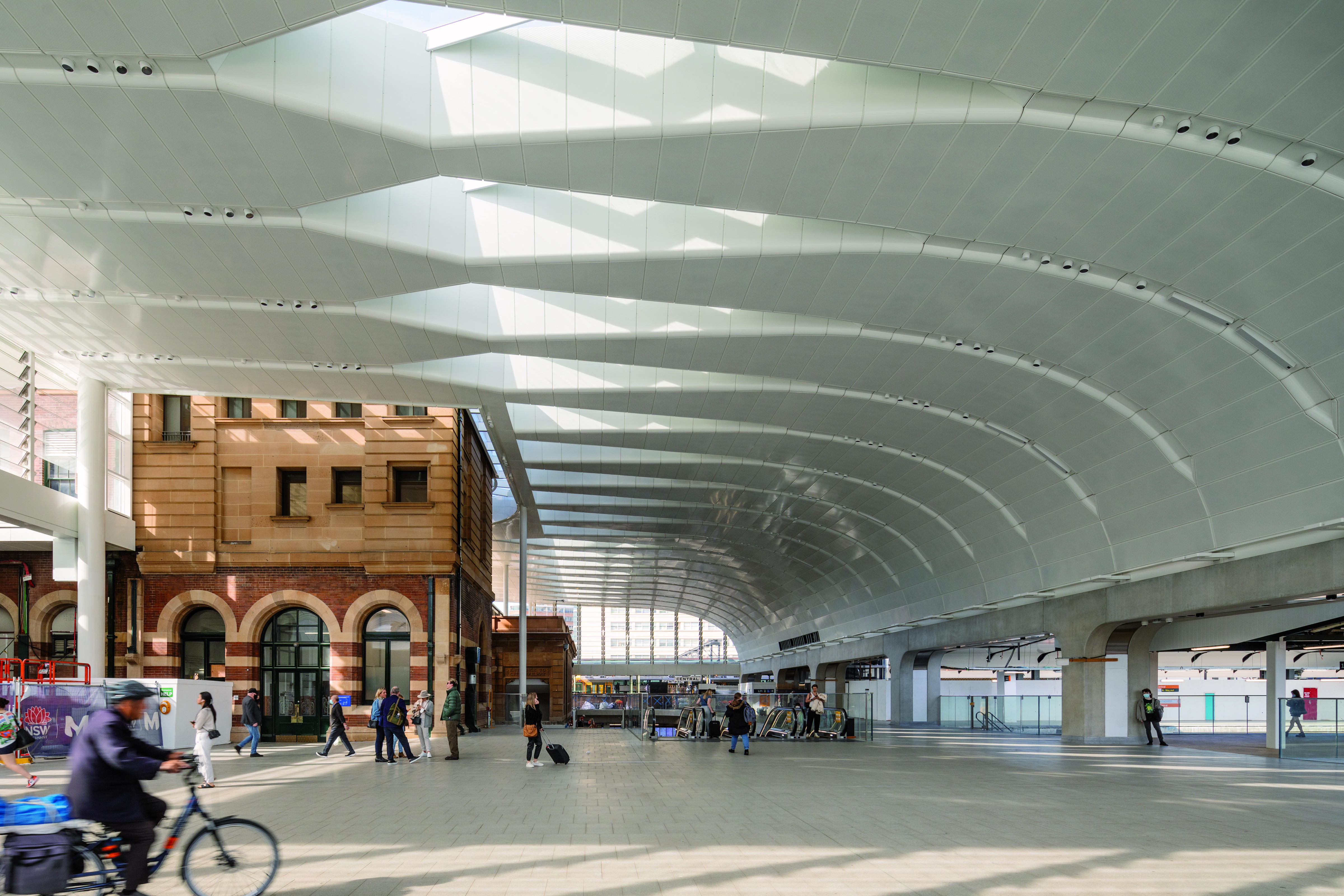
 Woods Bagot’s redesign of Sydney’s Central Station adapts a historic landmark into a state-of-the-art metro interchange. The most impressive addition is the vaulted roof spanning 165 feet (50 meters), which creates a dramatic new entrance sequence while harmonizing with the early 20th-century structure. Inside, circulation is carefully organized across multiple levels to manage large passenger flows with efficiency. Materials and forms reflect both modern engineering and the bold character of the original building.
Woods Bagot’s redesign of Sydney’s Central Station adapts a historic landmark into a state-of-the-art metro interchange. The most impressive addition is the vaulted roof spanning 165 feet (50 meters), which creates a dramatic new entrance sequence while harmonizing with the early 20th-century structure. Inside, circulation is carefully organized across multiple levels to manage large passenger flows with efficiency. Materials and forms reflect both modern engineering and the bold character of the original building.
The station is designed not only for current capacity but also for future regeneration, integrating placemaking into infrastructure. By balancing history with innovation, the project strengthens Central Station’s role as the backbone of Sydney’s transport network.
SFO Harvey Milk Terminal 1
By Gensler, San Francisco, California
Jury Winner, Transport Interior, 13th Architizer A+Awards

 Designed by Gensler, the terminal highlights natural light, clear circulation and calming environments, setting a new model for sustainable design. A suspended light sculpture in the Arrivals Hall reflects the region’s fog and wind, while the color palette evokes California’s varied landscapes. The terminal reduces noise with digital displays instead of overhead announcements and integrates accessibility features such as special signage and sensory rooms. Designed as a quiet and inclusive space, it provides comfort for diverse users.
Designed by Gensler, the terminal highlights natural light, clear circulation and calming environments, setting a new model for sustainable design. A suspended light sculpture in the Arrivals Hall reflects the region’s fog and wind, while the color palette evokes California’s varied landscapes. The terminal reduces noise with digital displays instead of overhead announcements and integrates accessibility features such as special signage and sensory rooms. Designed as a quiet and inclusive space, it provides comfort for diverse users.
Portland International Airport Main Terminal Expansion
by ZGF Architects, Portland, Oregon
Jury Winner, Transportation – Transport Interior, 13th Architizer A+Awards
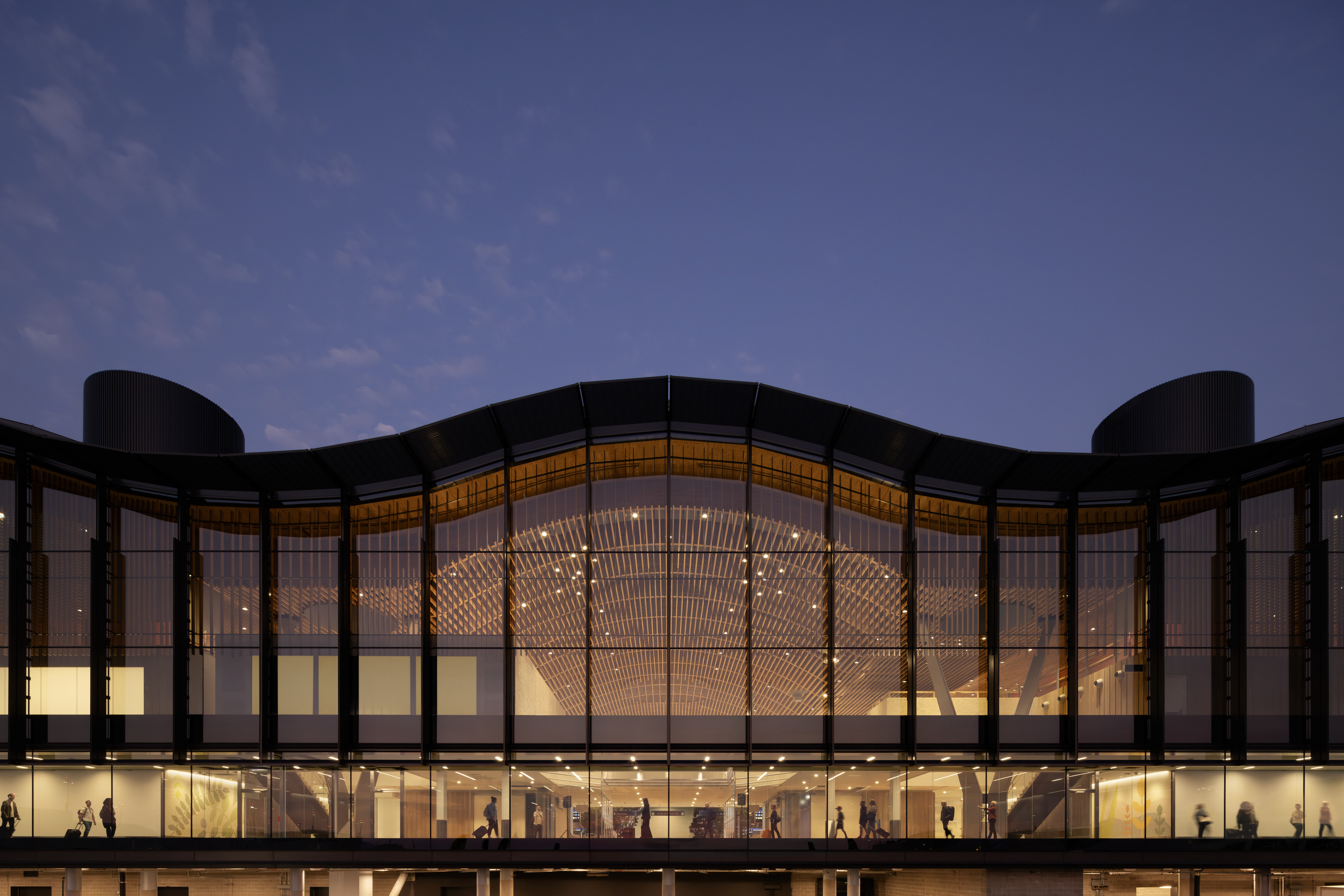
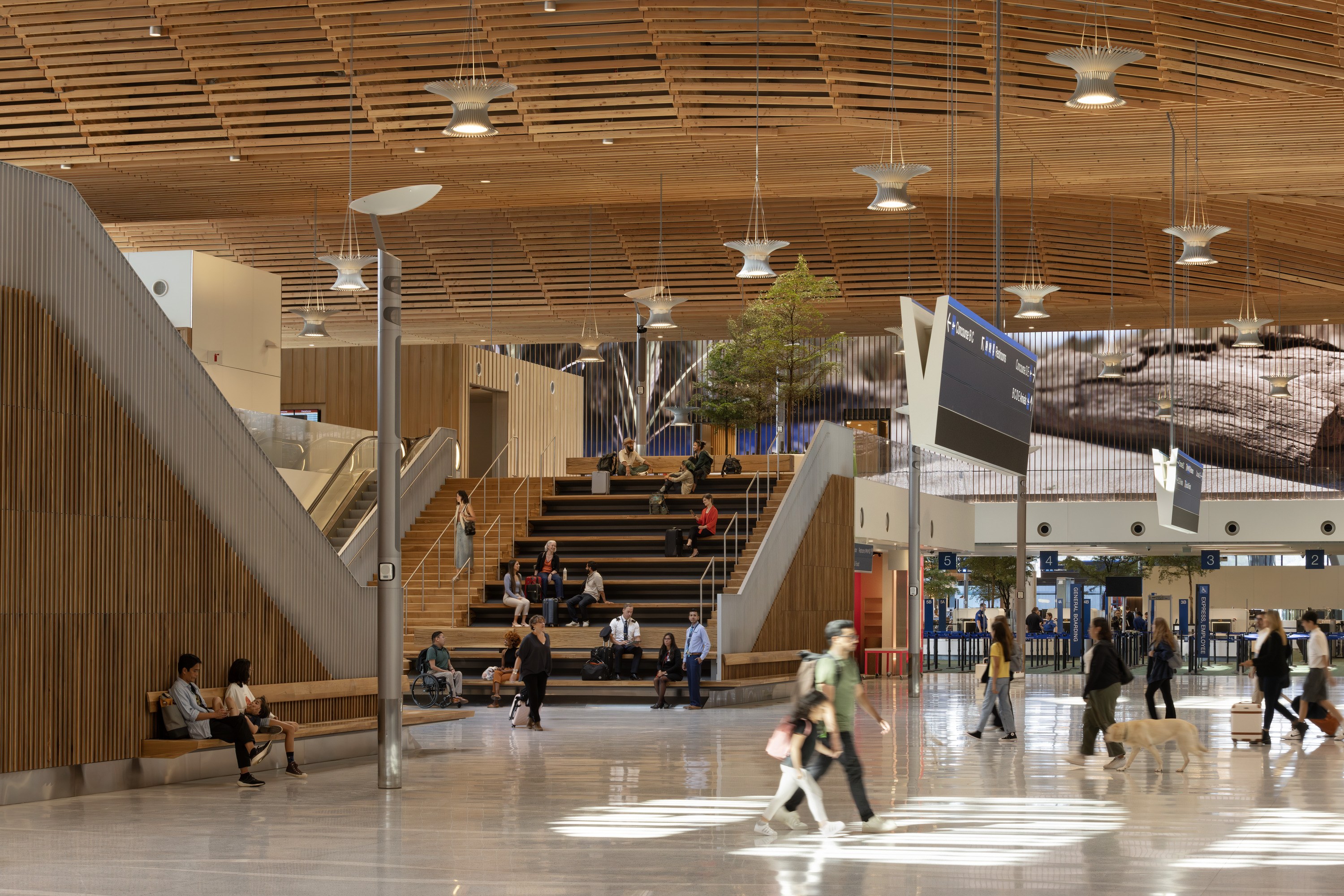 The terminal balances large-scale infrastructure with a human-centered environment, making the architecture both practical and deeply connected to place. Also, the most unique feature is the sweeping timber roof, built with locally sourced mass plywood and glulam, supported by 34 Y-shaped columns. Skylights cut into the canopy bring daylight deep into the terminal, creating a warm, natural atmosphere. Interior spaces celebrate the forest landscape, with views of the airfield and art installations referencing regional beauty. The design honors Oregon’s timber heritage by using wood traceable to family-owned forests and tribal lands. Functionally, the layout simplifies circulation while giving passengers an immersive experience.
The terminal balances large-scale infrastructure with a human-centered environment, making the architecture both practical and deeply connected to place. Also, the most unique feature is the sweeping timber roof, built with locally sourced mass plywood and glulam, supported by 34 Y-shaped columns. Skylights cut into the canopy bring daylight deep into the terminal, creating a warm, natural atmosphere. Interior spaces celebrate the forest landscape, with views of the airfield and art installations referencing regional beauty. The design honors Oregon’s timber heritage by using wood traceable to family-owned forests and tribal lands. Functionally, the layout simplifies circulation while giving passengers an immersive experience.
The latest edition of “Architizer: The World’s Best Architecture” — a stunning, hardbound book celebrating the most inspiring contemporary architecture from around the globe — is now available for pre-order. Secure your copy today.
The post Terminal Velocity: How Transport Architecture is Accelerating Into the Future appeared first on Journal.


















































